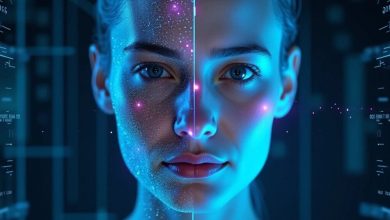AI vs. Cybercriminals: The Arms Race in the Digital Age

In today’s hyper-connected world, artificial intelligence (AI) has become a double-edged sword. While it is revolutionizing industries by automating processes and delivering insights, it is also being exploited for malicious purposes. Cybersecurity has become one of the most critical battlegrounds for AI, as defenders and attackers constantly strive to outsmart each other. Suresh Vethachalam, Certified Information Security Manager, delves into how AI is reshaping the cybersecurity landscape, the threats posed by AI-enabled cybercriminals, and strategies to stay ahead in this technological arms race.
The Rise of AI in Cybersecurity
AI is transforming cybersecurity by enabling faster and more accurate threat detection. Traditional methods often fail to keep up with the increasing volume and complexity of cyberattacks, but AI-powered systems can analyze vast amounts of data in real time to detect anomalies and predict potential breaches.
Key applications include:
– Threat Detection: Machine learning algorithms identify patterns in network traffic to detect suspicious behavior.
– Automation of Incident Response: AI tools can isolate compromised systems and neutralize threats autonomously.
– Behavioral Analysis: AI tracks user behavior to flag anomalies that could indicate insider threats or compromised accounts.
For instance, platforms like Darktrace use AI to create a digital “immune system” that constantly learns and adapts to new threats.
How Cybercriminals Use AI?
Unfortunately, the same technologies that protect us can be weaponized by cybercriminals. AI offers attackers the ability to scale their operations and improve the sophistication of their techniques.
Notable examples include:
– AI in Phishing Attacks: Cybercriminals use natural language processing (NLP) to craft highly personalized phishing emails that are indistinguishable from legitimate communication.
– Deepfakes: AI-generated fake videos and voices are used for identity fraud, misinformation campaigns, and social engineering attacks.
– Malware Evasion: AI-powered malware adapts to evade traditional detection mechanisms by altering its behavior.
A real-world example is the use of AI-generated voice deepfakes in a high-profile case where criminals impersonated a CEO to trick an employee into transferring millions of dollars.
The Battle of Algorithms: Defense vs. Offense
The cybersecurity landscape has become a battlefield of algorithms. Defensive systems leverage AI to detect and respond to threats, while attackers use AI to refine their strategies. This creates a constant loop of adaptation and counter-adaptation.
For example:
– AI systems detect unusual patterns in network traffic, but cybercriminals use adversarial techniques to confuse these systems.
– As defenders deploy AI to identify zero-day vulnerabilities, attackers use machine learning to find and exploit these vulnerabilities faster.
This arms race highlights the need for continuous innovation in AI-driven cybersecurity solutions, as emphasized by Suresh Vethachalam.
Challenges of Relying on AI in Cybersecurity
While AI offers significant advantages, it is not without challenges:
- Overreliance on Automation: AI systems can fail to detect complex attacks that require human intuition.
- Bias in AI Models: If trained on biased data, AI may overlook critical threats or produce false positives.
- Adversarial Attacks: Cybercriminals can exploit vulnerabilities in AI systems by feeding them misleading data.
These limitations underscore the importance of combining AI with human expertise to create a robust defense strategy.
Strategies to Win the Arms Race
To stay ahead, organizations must adopt a proactive and layered approach to cybersecurity:
Hybrid Defense: Combine AI-powered tools with skilled cybersecurity professionals to handle sophisticated threats.
Continuous Learning: Regularly update AI models with new threat intelligence to ensure they remain effective.
Collaboration: Share threat data across organizations and industries to build a collective defense against cybercriminals.
Ethical AI: Develop transparent and explainable AI systems to build trust and mitigate biases.
Investing in these strategies will help organizations not only defend themselves but also anticipate and counter future threats, as highlighted by Suresh Vethachalam.
Conclusion
The arms race between AI-powered cybersecurity and cybercriminals is far from over. As technology evolves, so do the tactics of attackers. By leveraging AI responsibly and combining it with human expertise, organizations can stay one step ahead in protecting their digital assets. The key lies in innovation, collaboration, and vigilance—a trifecta that will define the future of cybersecurity.





